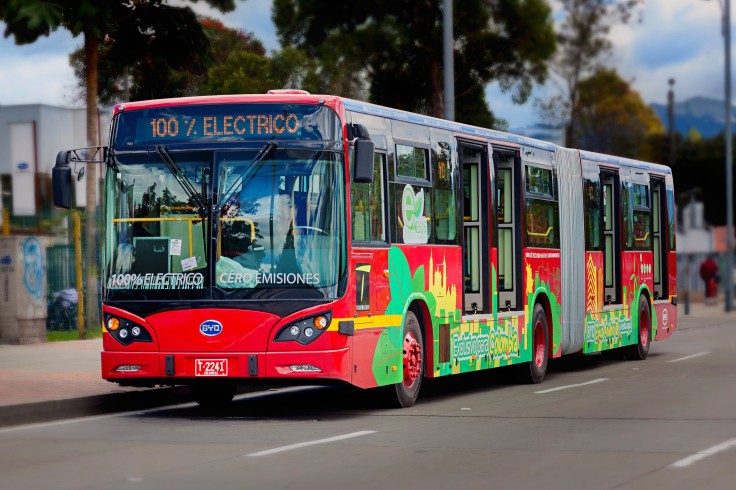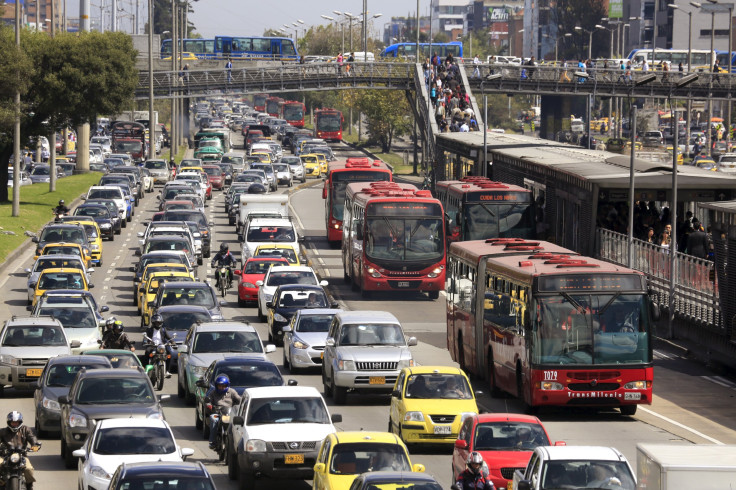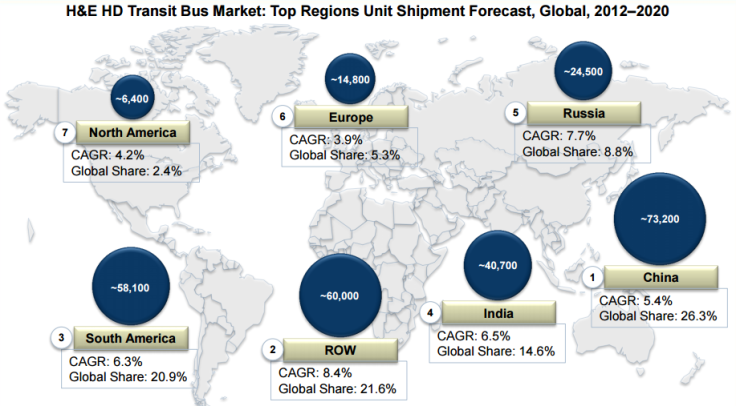Paris Climate Talks: Bogotá's Urban Experiment To Cut Smog And Carbon With Electric Buses


On the traffic-clogged, smog-choked streets of Bogotá, an urban experiment is unfolding. Officials in Colombia's capital city are putting alternative-fuel buses to the test, searching for the cleanest and most efficient models to restock the city’s mass transit system.
Bogotá is at the forefront of a movement to transform urban transportation networks. As heads of states and diplomats meet in Paris this month to negotiate a global accord on climate change, mayors and local officials around the world are already moving to cut greenhouse gas emissions and ditch high-carbon diesel and gasoline.
“We’ve seen massive interest from cities, particularly over the last 18 months, in switching their bus fleets to clean buses,” says Gunjan Parik, who heads the transportation initiative at C40 Cities, a network of nearly 80 megacities working on climate issues. Municipal leaders are watching Bogotá’s early experiences for direction, she says.
Bogotá, which sits around 8,600 feet above sea level, is home to 8 million people. The city lacks a subway system or light rail network, so millions of commuters each day take overcrowded diesel buses or drive their cars into bumper-to-bumper traffic. On the worst days, the tailpipe pollution forms a gritty gray smog over the downtown.

To help alleviate the problem, Bogotá’s municipal government in 2000 launched a “bus rapid transit” system called TransMilenio. The $3.3 billion system now includes more than 2,000 extra-long buses that drive along 76 miles of dedicated traffic lanes, making it one of the largest networks of its kind worldwide. Yet despite its scale, TransMilenio is struggling to keep pace with Bogotá’s booming population. And most of the buses still run on diesel, spewing soot and carbon emissions with every mile traveled.
So city officials are taking a new tack. Within the next decade, they plan to replace nearly all the 12,000 commuter buses and thousands more taxis with low- or zero-emission vehicle technologies, up from merely a few hundred today.
Bogotá began its initiative with a field test. In 2012, the city piloted three types of alternative fuel buses: all-electric, natural gas hybrid and low-sulfur diesel. The goal was to compare how each model performed on emissions and costs in a real world setting: winding up and down Bogotá’s hilly streets, stopping and starting in downtown gridlock and spending a full day in service.
Electric buses won the race. The Andino 12, an electric model by Chinese automaker BYD, cost about 21 U.S. cents per mile to drive, when accounting for fuel costs and long-term maintenance, such as engine repairs or brake replacements. Natural gas hybrids clocked in around 80 cents per mile under the same conditions. Low-sulfur diesel buses cost $1.20 per mile, due to their large appetite for fuel and frequent maintenance needs.

Because most of Bogotá’s electricity comes from hydropower plants, the 40-foot-long electric buses also boasted the lowest emissions per mile, at close to nil. The battery in BYD’s model can run more than 150 miles on a single charge, enough to last for a full day on the road before drivers plug in to charging stations at night, says Michael Austin, a vice president of BYD America in Chicago. While the bus is more expensive than a conventional diesel model, Austin says Bogotá could pay down the price premium of hundreds of thousands of dollars in two years, thanks to savings on fuel costs and repairs.
Bogotá is now working with clean bus manufacturers to develop vehicles that meet the South American city’s physical and economic needs. After the 2012 pilot, officials pressed BYD to build a model for its TransMilenio system: a 60-foot-long articulated bus -- one that bends in the middle with an accordion-like joint -- with a high floor to fit the city’s elevated bus platform. Austin says the manufacturer is developing the vehicles at its plant in Lancaster, California.
“They’ve really been asking manufacturers to raise their game, in terms of the kinds of resources they can provide to Bogotá,” Parik says.

Not all Bogotá residents are enthralled by the city’s clean bus push, however. Robert Barbosa, a 35-year-old filmmaker and lifelong Bogotan, says the city still desperately needs a subway system, better roads, safer bike lanes and other transportation fixes that would make it easier to get around. “It’s like if you took a few little pills to treat a terminal illness,” he says of the electric buses. “You’re trying to do something, but you’re not solving the problem.”
Still, Bogotá’s efforts are having an impact far beyond the city limits. Mayor Gustavo Petro Urrego this year helped launch the C40 Clean Bus Declaration, a document signed by dozens of cities worldwide to signal to manufacturers and investors their collective demand for alternative fuel vehicles. The C40 group plans to present the declaration at the climate talks in Paris this week.
“Mayors are saying they want to very quickly reach a point where all buses in their fleets are low- and zero-emissions. But this can only happen if the buses are affordable,” Parik says. “Bogotá is trying to get the buses to a place where they can really expand their fleet.”
© Copyright IBTimes 2025. All rights reserved.





















